By Gabriel Neeb
Before comics news websites, before email, and before BBSs, when comics fans wanted information about the comic books they were reading, they went to the Comics Buyer’s Guide (CBG). Published between 1971 and 2013, the Comics Buyer’s Guide reported news about comic book publishers, artists, related media endeavors and featured robust advertising for many of the biggest sellers of comics and related items. Additionally, noted creators John Jackson Miller, Peter David and Mark Evanier contributed columns to the paper. CBG was also famous for its letters column that featured letters from many of the famous creators of the period, including John Byrne and Erik Larsen.
On the fifth anniversary of the last published issue of CBG, #1699, the San Diego Comic Convention hosted a ‘Spotlight on Maggie Thompson’ panel featuring editor Maggie Thompson, Mark Evanier, R.C. Harvey and Scott Brick. Thompson was very clear that the panel would focus on Comics Buyer’s Guide and the assorted creators on the panel.
The first thing Thompson wanted to stress was that she and her husband, the late Don Thompson, did not found CBG but merely came to run it as the original publisher Alan Light was planning on ending it shortly after its start. Its continuing life came as a response to the tactic of some publishers of the era (1960s) to hype special issues, collect the resultant revenue from subscriptions and then cancel the magazine. The Thompsons decided to hype a coming issue of the (then titled) Buyer’s Guide to Comic Fandom, publish the issue and then return any leftover subscription money. The plan worked too well, as Alan Light was so impressed that he decided to continue publishing the magazine.
The CBG came out of a family of other ‘buyer’s guides’ that were circulating at the time, mainly ones dedicated to movies (this being before home video), as those magazines catered to fans that bought and traded- instead of video tapes- 8 mm and 16 mm copies of films. The fans of this subculture were… intense and ran contrary to comics fans of the time (1970) who Thompson said “…read for pleasure.”
As the early history of CBG was discussed, Thompson touched briefly upon the demise of CBG. It wasn’t necessarily the internet that killed it, but a business model that thrived on advertising revenue was soon undercut by the advertisers spending more money on Diamond Comics Previews magazine than ads in CBG. CBG was significantly cheaper to produce due to its use of newsprint as opposed to the example she used, of Wizard #1 which cost $55,000 (and the publisher heavily discounted its first issue).
As to what might have been Comic Buyer’s Guide #1700, R.C. Harvey stated that the content went on to form Alter Ego #122 (published by TwoMorrows).
The panel continued with the other guests providing insight into some of the events and fixtures of CBG. Mark Evanier had a column in the first issue (which he still has) and didn’t have another until 1994 when he began another column which lasted until 1997 (all proceeds being donated to the Comic Legal Defense Fund). The end of that column came over learning that CBG’s other columnist Peter David (But I Digress), was earning a penny more per word thanks to the contract vagaries of publisher Krause. Since it was 1997, Mark Evanier soon transferred over to the internet with his website newsfromme.com.
Panelist Scott Brick recounted his involvement at CBG by describing his first article being that of how he told artist Scott McDaniel about the history of the name Nightwing when McDaniel came to that title (McDaniel being unfamiliar with Silver Age character of the Superman comics that used the name Nightwing.) Randy Reynaldo, who was working at CBG at the time, suggested Brick write about comic book history for CBG.
This then led to Brick writing the 1997 article where he interviewed John Romita in a piece titled “Who Killed Gwen Stacey?” The answer was the late Gerry Conway who liked Mary Jane and wanted to get rid of Gwen. Brick is very proud of this article and still has the proof sheets from 20 years ago.
Maggie then began to tell stories of the ‘mortal remains’ of Comic Buyer’s Guide. When Krause moved from its home of Iola, Wisconsin to Steven’s Point, there was much discussion about what to do with the CBG archive. Krause planned to throw it out. Thompson was able to make arrangements for Columbia University to take control of the material.
But other related materials were consigned to the dump until John Jackson Miller was able to take possession of them. The last elements of CBG were 94 banker boxes of what were the forever copies of the magazine ended up in the hands of a collector in Texas.
Maggie and R.C. Harvey finished the main portion of the panel by discussing the recently passed Steve Ditko. Before even CBG, the Thompsons wrote in depth of how Ditko crafted his art of Spider-Man and the art related to the villains and the subtle contrasts between the two. Ditko read this, and in appreciation, sent the Thompsons a presentation piece drawn by him of Spider-Man. He even followed this later with a similar piece of Dr. Strange.
A brief question and answer period followed. The first question was from a gentleman that thanked Mark Evanier for helping to publicize a panel that was hosted that featured surviving Golden Age artists. Evanier wrote about the artists in his column, though he was regretful that it didn’t help since they’re all dead now.
Writer Bob Miller was wondering if the complete run of CBG that is held by Michigan State University would ever be digitized. Maggie was cautious as she stated “It would be a huge copyright question”. Harvey, having a bit of experience with the fair use doctrine, wasn’t so sure since he believed fair use would allow it.
The last question was more of a story from an audience member that his letter published in the Julie Schwartz memorial issue of CBG was right next to Harlan Ellison’s letter.
As Scott Brick said summing up the panel and the magazine, “Comic Buyer’s Guide was a gift. Spread the word.”


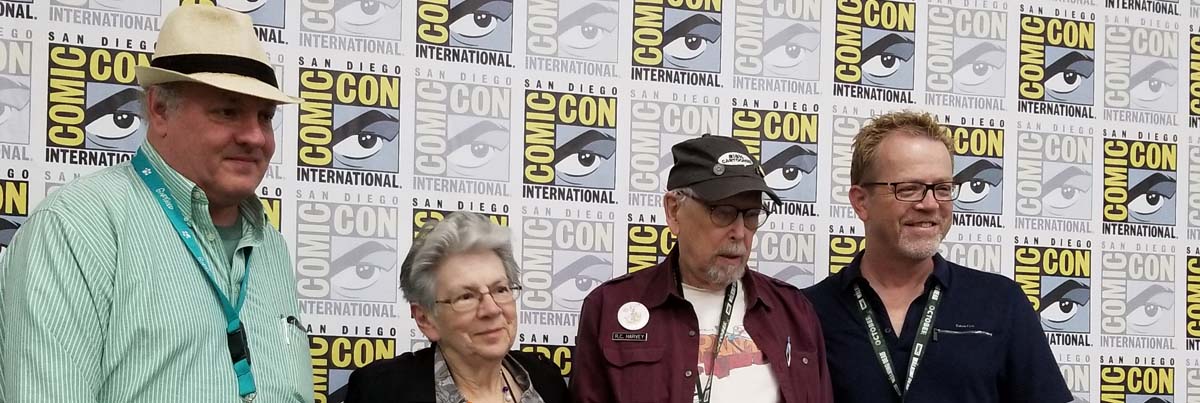
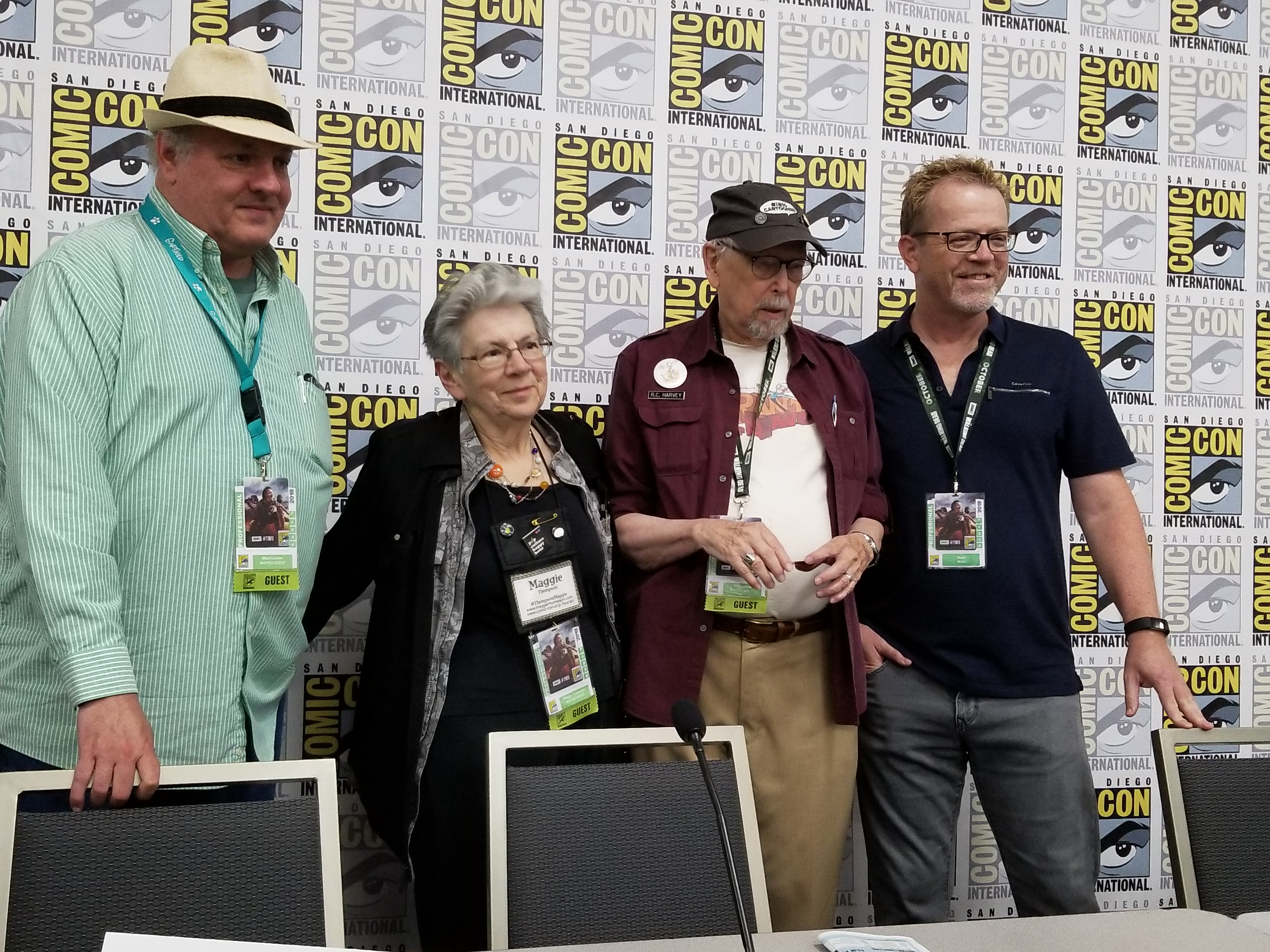
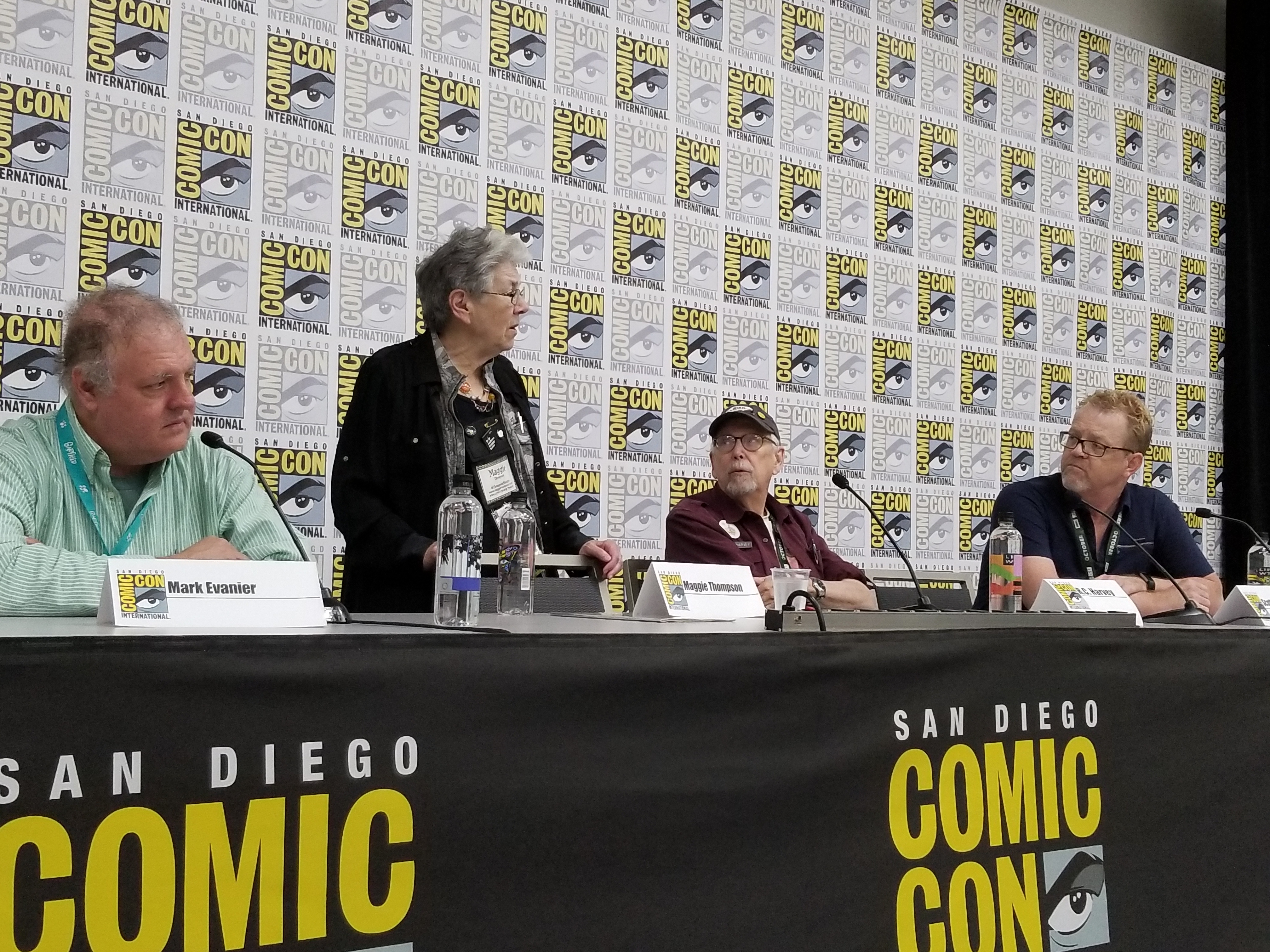

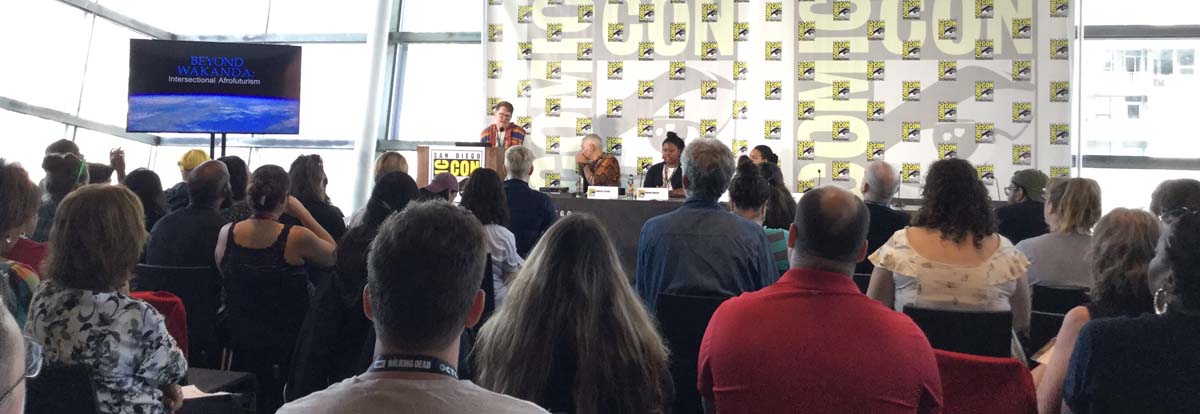
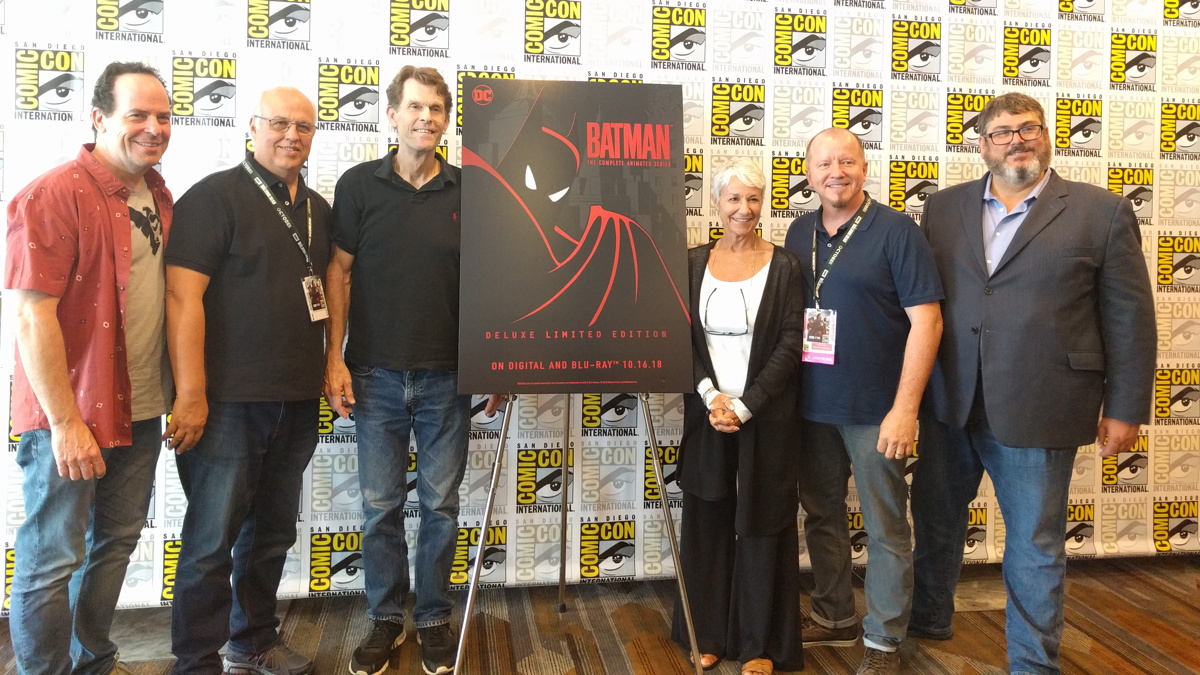


Don Thompson’s enthusiastic CBG review of my first Concrete story made all the difference in my career, I’m convinced.
I devoured this magazine from its beginning (that great Bob Kline cover!), my window into comics culture. Before the internet, it took real effort to find other fans.
Hi, Alan Light here – founder of CBG in 1971 and publisher of the first 481 issues. I enjoyed reading the account of the panel discussion at Comic-Con. I would say “I wish I had been there” but the truth is I wouldn’t have attended even if I had known the panel was going to happen (nobody told me) because those days are so long ago, I’m not interested in revisiting them and somewhat reclusive, and the focus of the panel was rightly on Maggie Thompson and the CBG days (issues #482-1699), not my years 1971 to 1982.
However, the account above of the founding of the publication is completely wrong. I’m fairly sure Maggie wouldn’t have said those things because she was there so maybe it got mangled in reporting, I don’t know. I wasn’t planning on ending it shortly after its start (it was a great success from the beginning), and I have no idea what this means: “The Thompsons decided to hype a coming issue of the (then titled) Buyer’s Guide to Comic Fandom, publish the issue and then return any leftover subscription money.”
TBG was distributed free to subscribers for the first year or two. There was no “leftover subscription money” because I subscriptions were free to anyone who gave me their address.
The article says “The plan worked too well, as Alan Light was so impressed that he decided to continue publishing the magazine.” There was no plan, this did not happen, TBG was FREE and an immediate success. I never had doubts about whether to continue the magazine.
What happened at the beginning, in a nutshell, was this: Don and Maggie Thompson had just announced the discontinuation of their fanzine newsletter, Newfangles, because of the work and expense of putting it out themselves. They were exhausted. I contacted them and said I would take over the publishing and mailing duties if they would like to continue it. I had the idea of a newspaper-format fanzine with comics news and articles. They wrote back to me and declined my offer, saying they were exhausted. So I went with my “Plan B” which was an ADZINE, the name back then for fanzines that were primarily advertising vehicles. I’m glad they declined my first offer because the adzine idea took off like gangbusters and I published it for 12 years. Issues were eventually published weekly, sometimes over 100 tabloid sized newsprint pages big, with 10,000 paying subscribers.
When I received an offer in 1982 from Krause Publications to buy TBG, I suggested they hire Don and Maggie Thompson to run it, and they did…changing the name slightly to CBG.
I’m very happy and proud that Comic-Con saluted CBG and Maggie with the panel. Maggie’s simply terrific, as everyone knows.
I fear my recounting of the origins of CBG/TBG were not as clear as they might have been. The news zine Don and I abandoned was NEWFANGLES, and we announced its demise in advance, with a countdown to the last issue. Following our brush-off of Alan Light’s offer to continue it, he went on to create THE BUYER’S GUIDE, appending “FOR COMIC FANDOM” – which brought the world a focal point to benefit people who loved comics. Alan’s account (see earlier reply) is absolutely accurate. It must have been clumsy phrasing on my part that led to the misunderstanding in the report. It was kind of Gabriel Neeb and THE BEAT to share the panel with the Internet! Much appreciated!
The LATE Gerry Conway? Unless that’s his very solid-looking ghost making appearances lately, you might want to edit that reference.
Thanks very much for this report — I devoured the CBG back in the day, and the topics covered by the panel were very interesting to me.
Hi, just to clarify/correct–while Scott Brick, a longtime friend dating back to our college years, he has always been generous at crediting me for the opportunities he found as a writer first at Wizard and then the CBG, I never worked at CBG as mentioned in the article. But as a cartoonist/indy publisher (WCG Comics/Rob Hanes Adventures), I was familiar with the comics industry press and merely called to his attention opportunities there and connected him to Maggie Thompson later. Scott did all the heavy after that!
This was a terrific panel and I was touched and honored by the kind shout outs I got from Scott, as well as from Maggie and R.C. Harvey during the discussion! Scott did a nice job at the end summarizing the importance of the CBG to the comics community–I often said that, in the time before the web, other than conventions, the CBG was the best gathering place for comics fandom, acting both as a news source and industry trade journal.
Comments are closed.